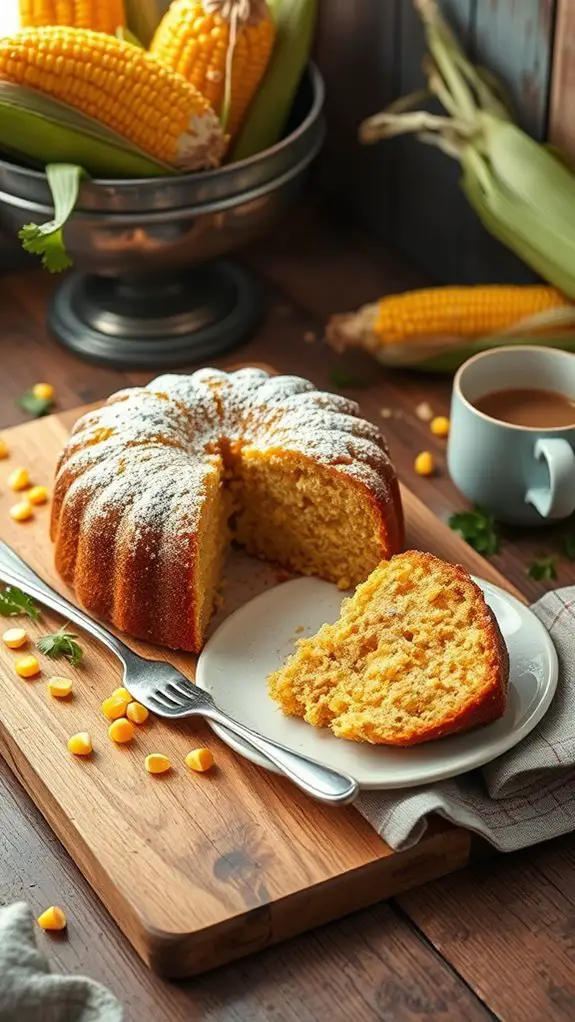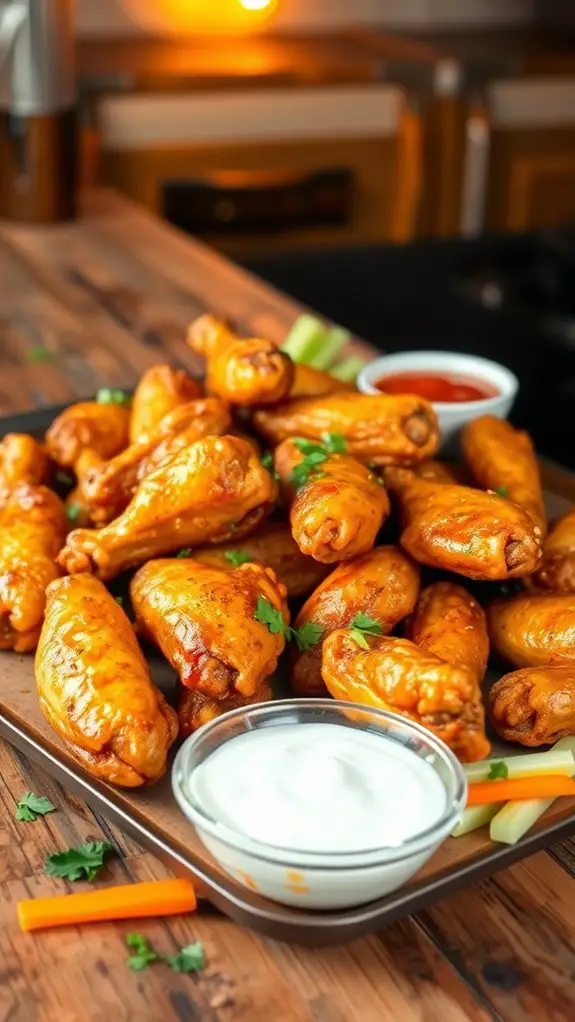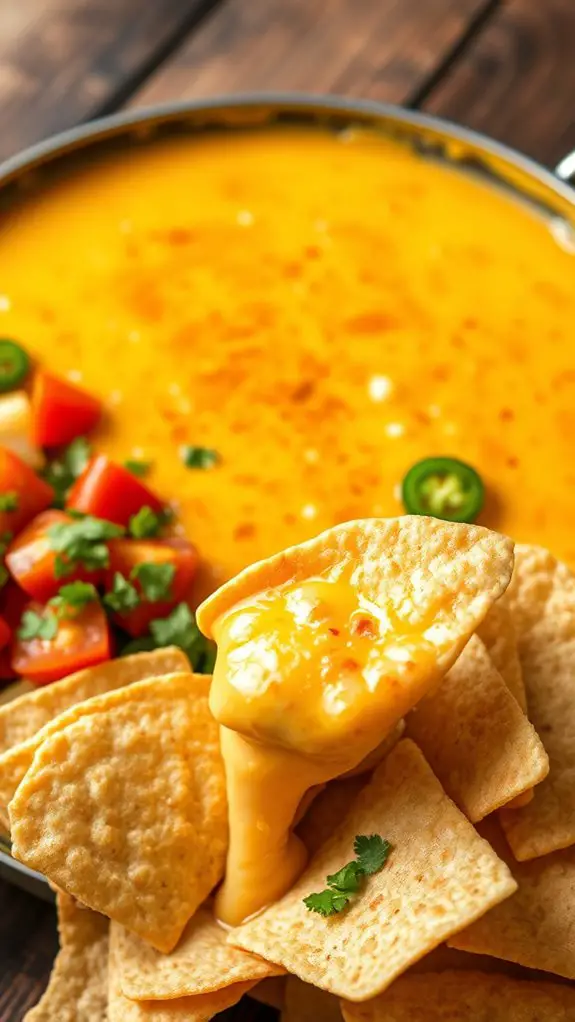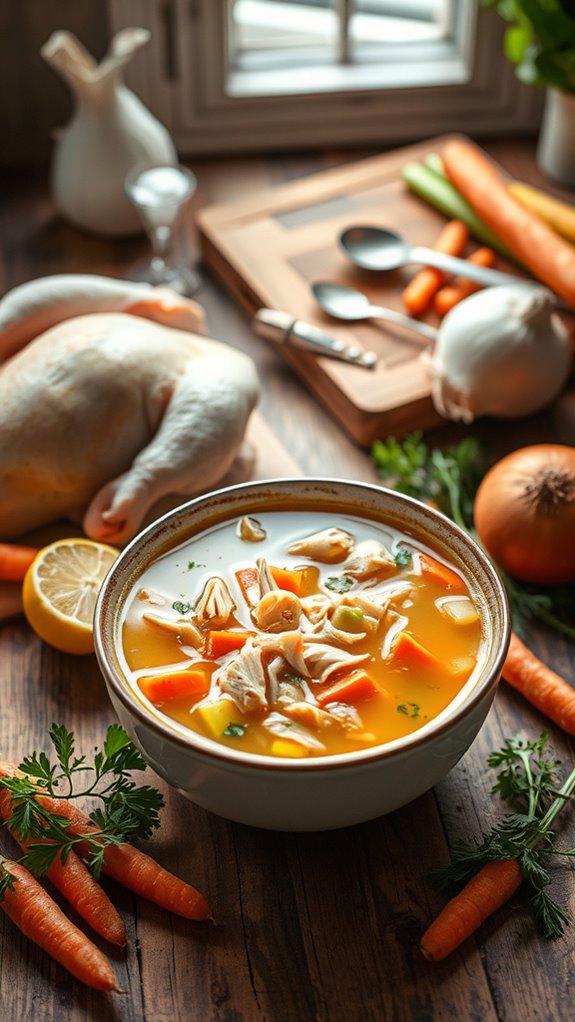Corn Cake

You might not know this, but corn cakes have a fascinating history that's deeply rooted in indigenous cultures across the Americas. These versatile delights were once a dietary staple, nourishing communities with their wholesome ingredients and comforting flavors. Today, they continue to captivate palates with their perfect balance of crispness and tenderness. Intrigued? Immerse yourself in the rich culinary traditions that have shaped this beloved dish.
History

Although the exact origins of corn cake are unclear, it's believed to have emerged as a staple food among various indigenous cultures across the Americas.
Corn, a crop domesticated thousands of years ago, held immense cultural significance for many pre-Columbian societies. From the Andes to Mesoamerica, indigenous peoples incorporated this versatile grain into their diets, developing unique recipes and preparation methods.
Corn cakes, in particular, arose as a way to transform the crop into a portable, nutritious food that could be easily
Recipe

Corn cakes are a delightful and versatile dish that can be enjoyed for breakfast, lunch, or as a side. They're made from a simple batter of cornmeal, eggs, and a few other ingredients, and can be cooked on the stovetop or in the oven.
Whether served with maple syrup, salsa, or as a base for a savory dish, corn cakes are a crowd-pleasing favorite.
The key to making perfect corn cakes is to strike the right balance between a crispy exterior and a tender, fluffy interior. With a few simple techniques and the right ingredients, you can create a batch of corn cakes that are sure to impress.
Ingredients:
- 1 cup cornmeal
- 1/2 cup all-purpose flour
- 2 teaspoons baking powder
- 1/2 teaspoon salt
- 1 cup milk
- 2 eggs, lightly beaten
- 2 tablespoons butter, melted
Instructions:
In a large bowl, whisk together the cornmeal, flour, baking powder, and salt.
In a separate bowl, combine the milk, eggs, and melted butter. Pour the wet ingredients into the dry ingredients and stir until just combined, being careful not to overmix.
Heat a large skillet or griddle over medium heat and lightly grease the surface. Scoop the batter onto the hot surface, using about 1/4 cup of batter per cake.
Cook for 2-3 minutes per side, or until the cakes are golden brown and cooked through.
Tip: For best results, let the batter rest for 10-15 minutes before cooking. This allows the cornmeal to fully hydrate and results in a more tender and cohesive cake.
Serve the corn cakes warm, with your favorite toppings or accompaniments.
Nutritional Guide
While corn cakes may appear to be a simple dish, their nutritional profile is quite remarkable. With a relatively low caloric content, corn cakes offer a wealth of health benefits.
They're a good source of complex carbohydrates, providing sustained energy, and also contain fiber, which supports digestive health. Additionally, corn is rich in antioxidants like lutein and zeaxanthin, which can help protect against age-related macular degeneration.
Historically, corn has been a staple food in many cultures, providing essential nutrients. Incorporating corn cakes into a balanced diet can contribute to overall well-being, making them a nutritious and satisfying choice.
Final Thought
Given the enduring significance of corn in global cuisine and culture, it's clear that corn cakes have earned their place as a nutritious and time-honored staple.
Their cultural significance spans millennia, with corn cakes being a dietary mainstay for ancient civilizations. Today, they remain a beloved comfort food, often served as a side dish or snack.
To truly appreciate corn cakes, consider pairing them with savory toppings like roasted vegetables, grilled meats, or tangy sauces.
The versatility of corn cakes allows them to shine in both traditional and modern culinary settings, cementing their status as a timeless and versatile part of the human experience.





